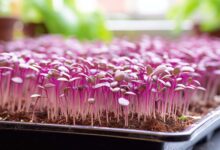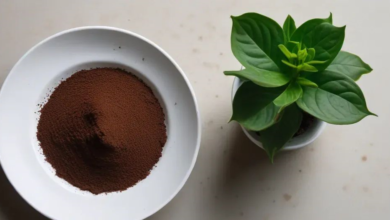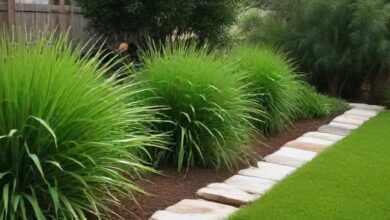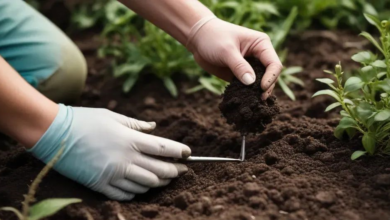15 Air-Purifying Houseplants That Clean Your Home Naturally
Discover the 15 best air-purifying houseplants that clean your home naturally. Remove toxins like formaldehyde and benzene with these easy.
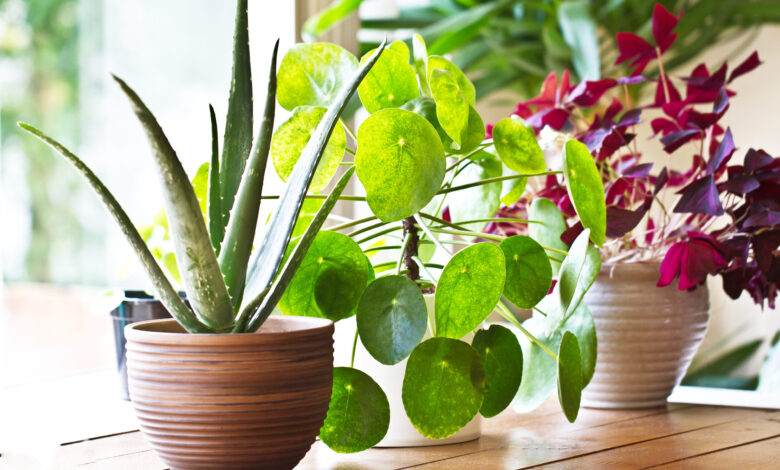
Air-purifying houseplants have emerged as one of the most accessible and aesthetically pleasing solutions to improve indoor air quality and create healthier living environments. While many of us spend approximately 90 percent of our time indoors, the air we breathe within our homes is often significantly more polluted than outdoor air. Indoor air pollution, stemming from volatile organic compounds (VOCs) like formaldehyde, benzene, and trichloroethylene found in furniture, paints, carpeting, and cleaning products, poses serious health risks, including respiratory issues, headaches, and long-term health complications. Fortunately, houseplants that clean air offer a natural, cost-effective, and visually appealing remedy to this modern challenge.
Groundbreaking research conducted by NASA in 1989, in collaboration with the Associated Landscape Contractors of America, demonstrated that certain indoor plants effectively remove toxins through the biological process of photosynthesis and transpiration. These natural air filters don’t simply absorb carbon dioxide and release oxygen—they actively extract harmful chemicals from your indoor atmosphere, transforming them into safe compounds within their root systems. Beyond their remarkable air-purifying benefits, these green plants for home air quality offer additional advantages, including stress reduction, improved mood, enhanced humidity regulation, and aesthetic enhancement of any living space.
Best houseplants for indoor air quality range from low-maintenance options perfect for beginners to more sophisticated tropical varieties that make striking design statements. Whether you seek plants that remove formaldehyde, desire NASA-approved air-purifying plants, or simply wish to create a healthier indoor environment, this comprehensive guide presents fifteen outstanding air-cleaning plants scientifically proven to enhance your home’s air quality. These effective air purification plants require minimal care, thrive in various light conditions, and deliver maximum health benefits—making them ideal additions to bedrooms, living rooms, kitchens, and offices. How houseplants clean air and selecting appropriate species for your space empowers you to transform your home into a healthier sanctuary while beautifying your interior design.
How Air Purifying Houseplants Work

- How do air-purifying plants work? The biological mechanisms behind plant air purification help appreciate these remarkable living filters. Air-purifying houseplants remove toxins through multiple interconnected processes operating simultaneously within the plant and its surrounding soil ecosystem.
- Photosynthesis and Transpiration Process: During photosynthesis, houseplants absorb carbon dioxide from the air while simultaneously drawing in airborne pollutants through microscopic pores called stomata. Plant transpiration, the process by which plants release moisture through leaves, creates air circulation patterns that encourage pollutant contact with foliage. As plants process VOCs, these harmful compounds are transported into the plant’s vascular system and broken down in the roots.
- Soil Microorganism Contribution: Microorganisms thriving in potting soil around houseplants play equally important roles in air purification from plants. These beneficial bacteria and fungi metabolize and neutralize harmful chemicals, preventing their release back into indoor air. This dual-action system—combining plant biology with microbial air filtration—creates a comprehensive natural air cleaning system substantially more effective than plants working in isolation.
- Humidity Regulation: Air-purifying plants increase indoor humidity through transpiration, releasing water vapor that reaches 40-60% of the plant’s water intake. This moisture from plants prevents dry air conditions that exacerbate respiratory issues and allows for more effective toxin absorption.
1. Spider Plant (Chlorophytum comosum) – The Beginner’s Champion
- Spider plants rank among the most effective and forgiving air-cleaning houseplants, making them perfect for introducing newcomers to indoor plant air purification. Producing dangling offspring plantlets resembling spider legs, this easy-care houseplant instantly adds visual interest while delivering exceptional air-cleaning performance.
- Toxin Removal Abilities: Spider plants remove formaldehyde, absorb carbon monoxide, and decompose benzene and nicotine from indoor air. Studies demonstrate that a single spider plant in a 200 square-foot room provides measurable air purification benefits. When placed in sealed chambers containing 120 parts per million of carbon monoxide, spider plants remove 96 percent of contaminants within 24 hours—an extraordinary purification rate exceeding many mechanical systems.
- Care Requirements: Spider plants tolerate low light, irregular watering, and temperature fluctuations, thriving in hanging baskets where their cascading runners create dramatic displays. Indirect sunlight suits them perfectly, and they require minimal fertilization. Propagate freely from abundant offspring plantlets, generating multiple air-purifying plants from single parent specimens.
2. Peace Lily (Spathiphyllum spp.) – The Elegant Purifier
The peace lily combines striking aesthetic appeal with superior air-purifying houseplant capabilities, earning its place among the most popular indoor plants for air cleaning. Featuring lush dark green foliage and distinctive white spoon-shaped flower bracts, this tropical houseplant elevates any interior while actively purifying the surrounding air.
- Purification Performance: Peace lilies excel at removing formaldehyde, benzene, acetone, trichloroethylene, and ammonia from indoor environments. The air-purifying qualities of peace lilies extend to numerous volatile organic compounds (VOCs) common in modern homes. This high-transpiration plant simultaneously humidifies air while filtering toxins, creating noticeably fresher indoor environments.
- Growing Conditions: Peace lilies prefer indirect to medium-low light, adapting admirably to office environments and bathrooms with minimal natural illumination. These low-light air-purifying plants signal water needs by drooping—simply water thoroughly when wilting appears, and the plant rebounds within hours. Mist peace lilies frequently to maintain humidity levels and enhance their air-purifying effectiveness.
3. Snake Plant (Sansevieria trifasciata) – The Night-Time Oxygen Generator
Often called mother-in-law’s tongue, the snake plant exemplifies resilience and effectiveness in air-purifying houseplants. This architectural houseplant features striking vertical striped leaves that complement contemporary and traditional décor while delivering remarkable air-cleaning benefits.
- Unique Oxygen Production: Snake plants exhibit unusual behavior by releasing oxygen at night, making them exceptional choices for bedroom air-purifying plants. This nocturnal oxygen release provides fresh air during sleep hours when air quality becomes most critical. Snake plants remove formaldehyde, filter benzene and xylene, and eliminate multiple household toxins through continuous transpiration.
- Minimal Care Requirements: Snake plants survive with minimal water, tolerating drought, low light, and temperature extremes. This low-maintenance air purifier requires watering only when the soil becomes completely dry, making it ideal for busy individuals or forgetful plant parents. Place in bedrooms, offices, or any location requiring both air purification and resilient beauty.
4. Boston Fern (Nephrolepis exaltata) – The Moisture Master
- Boston ferns function as both air-purifying houseplants and natural indoor humidifiers, making them perfect for dry climates and individuals seeking air quality improvement with humidity regulation. The feathery, fountain-like fronds create lush, tropical atmospheres while actively cleaning the surrounding air.
- Air Purification and Humidity Benefits: Boston ferns effectively remove formaldehyde and xylene from indoor environments while simultaneously increasing humidity levels through active transpiration. This dual function makes Boston ferns ideal for air purification in dry homes and locations experiencing respiratory health challenges. Unlike many indoor plants for air cleaning, Boston ferns provide substantial humidity elevation—critical for maintaining healthy breathing passages and preventing allergen accumulation.
- Care Considerations: Boston ferns require high humidity and consistent soil moisture, preferring locations near bathrooms or kitchens naturally provide elevated humidity levels. Mist fronds regularly and maintain consistently damp soil. While requiring more attentive care than some easy-care air-purifying plants, the substantial air purification benefits of Boston ferns justify the modest additional effort.
5. Rubber Plant (Ficus elastica) – The Formaldehyde Fighter
The rubber plant delivers both dramatic visual impact and exceptional air-purifying capability, making it a premium choice for those seeking attractive air-cleaning houseplants. Featuring large, glossy, deep green leaves with burgundy undersides, this statement houseplant transforms ordinary rooms into sophisticated spaces.
- Formaldehyde Removal Excellence: Rubber plants remove formaldehyde with remarkable efficiency, continuously absorbing this pervasive indoor pollutant commonly emitted from furniture, fabrics, and building materials. The large leaf surface area of rubber plants provides an extensive area for toxin absorption and air purification through both direct plant absorption and soil microbial action.
- Styling and Care: Rubber plants prefer bright, indirect light and well-draining soil with moderate watering. Clean rubber plant leaves regularly using soft, damp cloths to enhance their air-purifying effectiveness by removing dust accumulation, blocking light absorption, and transpiration. This easy-to-care houseplant rewards proper placement with vigorous growth and superior air-cleaning performance.
6. Areca Palm (Chrysalidocarpus lutescens) – The Tropical Detoxifier
The areca palm, also known as the butterfly palm or golden cane palm, stands among the most powerful air-purifying houseplants identified by NASA research. This tropical houseplant removes significantly higher concentrations of toluene and xylene—notoriously toxic compounds found in paints, solvents, and industrial products—than any competing plant species.
- Superior Toxin Removal: Areca palms eliminate benzene, formaldehyde, and trichloroethylene while adding substantial humidity through water vapor emission. Tall, mature areca palms release approximately one quart of water daily into the surrounding air, making them exceptional natural humidifiers for air quality improvement in dry environments. This combined toxin absorption and humidity elevation makes areca palms powerful allies in creating healthier indoor air.
- Growing Requirements: Areca palms prefer part sun to part shade with warm temperatures and consistent moisture. These tropical plants thrive in humid conditions but develop brown fronds if exposed to dry air or inconsistent watering. Position near east-facing windows receiving morning sunlight for optimal growth while maintaining the bright, humid conditions these air-purifying plants require.
7. Golden Pothos (Epipremnum aureum) – The Versatile Climber
- Golden pothos, also called devil’s ivy, represents one of the easiest air-purifying houseplants to cultivate while delivering substantial toxin removal capability. This trailing houseplant adapts to virtually any lighting condition, making it universally suitable for homes, offices, and commercial spaces.
- Broad Toxin Spectrum: NASA research, including a 2016 study titled “The effect of Golden Pothos in reducing volatile organic compounds in a simulated spacecraft cabin,” confirms that golden pothos removes formaldehyde, benzene, and multiple VOCs effectively. Pothos air purification occurs through both direct plant absorption and root microbial processing, establishing this climbing houseplant as a powerful indoor air purifier.
- Propagation and Placement: Pothos tolerates low light, infrequent watering, and temperature fluctuations, thriving in bathrooms, basements, or dim corners where other air-cleaning plants struggle. Propagate pothos easily by cutting vine segments and placing them in water indefinitely or potting them directly into soil. Use as trailing air-purifying plants in hanging baskets or train as vertical living walls for maximum air contact and purification coverage.
8. Peace Lily Variant: Dracaena (Corn Plant) – The Tropical Cleaner
- Dracaena fragrans, commonly called corn plant due to corn-like leaf patterns, represents an exceptional air-purifying houseplant ranked among NASA’s top toxin removers. Multiple Dracaena varieties, including Janet Craig, Massangeana, and Warneckii variants, all excel at air purification.
- Multi-Toxin Elimination: Corn plants remove formaldehyde, benzene, and trichloroethylene while tolerating the low-light conditions common in modern offices and interior spaces. This tropical air-purifying plant grows slowly but steadily, developing attractive cane-like stems producing abundant dark green or variegated foliage, depending on variety selection.
- Easy Care Profile: Dracaena plants thrive with minimal attention, tolerating occasional watering and varied light conditions. Allow soil to dry between waterings, avoiding soggy conditions that promote root issues. Space-friendly Dracaena varieties work excellently in offices and workspaces where natural air purification combines with professional aesthetics.
9. Aloe Vera – The Healing Purifier
- Aloe vera transcends its reputation as a natural first-aid plant, functioning as an effective air-purifying succulent requiring minimal maintenance. This drought-tolerant houseplant stores water in thick, fleshy leaves while simultaneously absorbing indoor toxins and releasing oxygen.
- Purification Through Photosynthesis: Aloe vera removes formaldehyde and benzene while exhibiting the remarkable ability to release oxygen at night, similar to snake plants. This nighttime oxygen production makes aloe vera particularly valuable in bedroom air quality improvement. The plant’s air-purifying capability combines with well-documented healing and soothing properties, offering dual benefits for health-conscious homeowners.
- Minimal Care Demands: Aloe vera thrives in bright light with infrequent watering, making it ideal for low-maintenance air-purifying plants. Allow soil to dry completely between waterings, as this succulent plant stores significant water reserves. Position in sunny windowsills where aloe vera’s thick leaves receive maximum light for optimal air purification and oxygen production.
10. Bamboo Palm (Chamaedorea seifrizii) – The Formaldehyde Champion
The bamboo palm, despite its misleading common name, represents a legitimate palm species excelling at formaldehyde removal from indoor air. This tropical houseplant adds sophisticated, resort-like aesthetics while functioning as a powerful air-purifying system for home or office environments.
- Superior Formaldehyde Removal: Bamboo palms rank exceptionally high in their ability to remove formaldehyde from indoor air, also effectively eliminating benzene and trichloroethylene. The lacy green fronds create beautiful foliage while substantial transpiration humidifies the surrounding air. This dual-action air purification and humidity elevation makes bamboo palms outstanding choices for comprehensive indoor air quality improvement.
- Tropical Care Requirements: Bamboo palms prefer bright, indirect light and warm temperatures between 60-70°F. Maintain consistently moist but not waterlogged soil, as this tropical plant originates from humid environments. Adding sand to potting soil for bamboo palms improves drainage while maintaining the consistent moisture these air-purifying palms require for optimal growth.
11. Gerbera Daisy – The Flowering Purifier
- Gerbera daisies bring vibrant color and exceptional air-purifying capability to indoor spaces, ranking among NASA’s top air-cleaning houseplants for benzene removal specifically. These flowering air-purifying plants provide dual benefits of aesthetic brilliance and powerful toxin elimination.
- Comprehensive Toxin Removal: Gerbera daisies remove formaldehyde, benzene, and trichloroethylene while producing beautiful cut flowers perfect for fresh arrangements. Flowering air-purifying plants like gerberas offer advantages over foliage-only varieties by providing visual interest beyond mere greenery. The natural fragrance of gerbera blooms adds olfactory appeal while the plant actively purifies the surrounding air.
- Blooming Care: Gerbera daisies require bright light for prolific flowering, preferring 5+ hours of direct sunlight daily. Fertilize gerberas monthly during the blooming season with phosphorus-rich formulas promoting abundant flowers. While requiring more attentive care than low-maintenance air-purifying houseplants, the substantial air purification benefits and stunning visual appeal justify the additional effort.
12. Weeping Fig (Ficus benjamina) – The Elegant Filter
The weeping fig combines graceful, drooping foliage with exceptional air-purifying capabilities, functioning as both a decorative houseplant and a powerful indoor air filter. Long, glossy leaves create elegant, fountain-like silhouettes while actively removing indoor toxins.
- Adhesive and Solvent Removal: Weeping figs prove particularly effective at removing chemicals found in adhesives, nail polish, glues, and stain removers—toxins often overlooked by other air-purifying plants. This specialized air purification capability makes weeping figs valuable for homes with recent renovations, fresh paint applications, or nail salons.
- Light and Humidity Requirements: Weeping figs prefer bright, filtered light in warm, humid environments similar to their tropical origins. Maintain consistent soil moisture without waterlogging, and mist leaves regularly to maintain the humidity levels this elegant houseplant requires. Position away from drafty areas, as temperature fluctuations cause leaf drop.
13. Chinese Evergreen (Aglaonema) – The Resilient Cleaner
- Chinese evergreen exemplifies aesthetic beauty meeting practical functionality, offering attractive air-purifying foliage in diverse colors, including green, silver, red, and pink variegations. This versatile houseplant adapts readily to office and home environments while actively purifying indoor air.
- Formaldehyde Specialization: Aglaonema species rank highly among plants that remove formaldehyde effectively, making them outstanding choices for homes containing pressed wood furniture or fiberglass insulation. Chinese evergreens tolerate low-light environments common in offices and interior rooms, thriving where other air-purifying plants struggle to survive.
- Beginner-Friendly Care: Chinese evergreens tolerate irregular watering and varied light conditions, requiring minimal fertilization and care. Allow soil to dry between waterings and provide warm temperatures, avoiding drafts. These easy-to-propagate air-purifying plants generate abundant cuttings for expanding your indoor air purification network throughout your home.
14. ZZ Plant (Zamioculcas zamiifolia) – The Undemanding Performer
The ZZ plant delivers remarkable air-purifying capability wrapped in an exceptionally low-maintenance package, making it ideal for busy individuals, office environments, or first-time plant owners. Glossy, compound leaves create architectural interest while this hardy houseplant tirelessly purifies indoor air.
- Low-Light Air Purification: ZZ plants function as powerful low-light air-purifying plants, thriving in dim offices or interior rooms where sunlight penetration remains minimal. This shade-tolerant air purifier removes multiple household toxins while requiring watering only when the soil becomes completely dry. The extremely low-maintenance profile of ZZ plants makes them universal choices for maximizing air quality improvement with minimal effort.
- Office and Workspace Application: ZZ plants excel in corporate environments, adapting readily to artificial lighting and climate-controlled conditions. Their upright growth habit creates visual structure without requiring floor space, and their robust health withstands occasional neglect inherent to office settings.
15. English Ivy (Hedera helix) – The Airborne Defense System
- English ivy serves purposes extending beyond conventional air purification, offering unique capabilities in reducing airborne pathogens and fecal particles—a specialized purification function distinguishing it from other indoor air-cleaning plants. This trailing houseplant adapts excellently to bathrooms and moisture-prone spaces.
- Pathogen Reduction Properties: Beyond standard formaldehyde and benzene removal, English ivy demonstrates the ability to reduce airborne fecal matter and associated pathogens, making it exceptionally valuable for bathroom air quality improvement. This unique air-purifying characteristic positions English ivy as a specialized air-cleaning plant particularly suited to hygiene-critical spaces.
- Humidity and Moisture Tolerance: English ivy thrives in high-humidity environments, tolerating moisture levels that challenge other houseplants for air cleaning. Trailing ivy in hanging baskets above bathroom exhaust fans creates maximum air circulation and toxin exposure, optimizing this air-purifying plant’s effectiveness in moisture-prone spaces.
Strategic Placement for Maximum Air Purification Impact
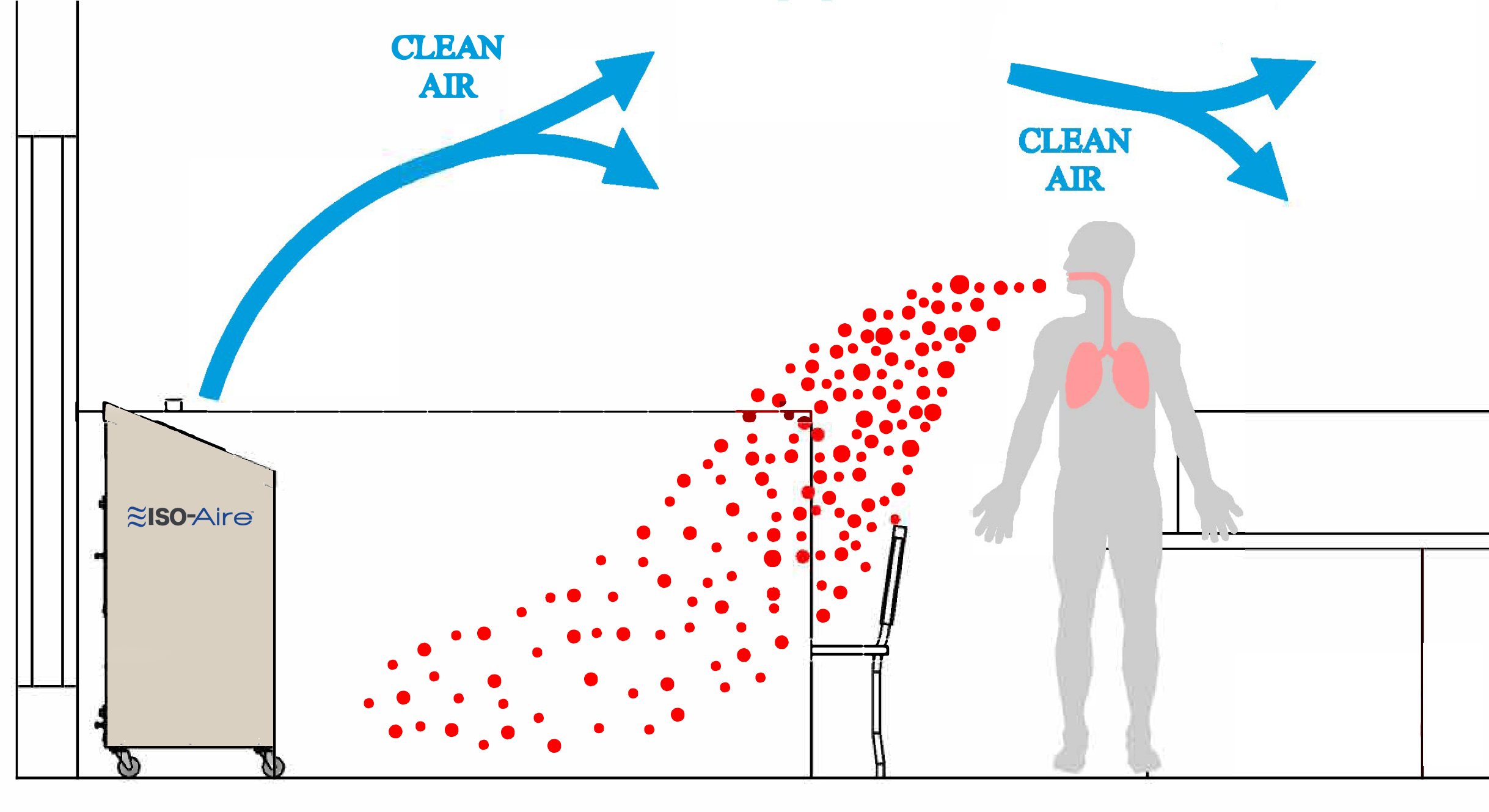
Where to place air-purifying plants dramatically influences their effectiveness in creating healthier indoor environments. Strategic plant placement maximizes air circulation and toxin exposure, optimizing air-purification benefits.
- Bedroom Air Purification: Position oxygen-releasing plants like snake plants, aloe vera, or peace lilies in bedrooms to purify air during sleep hours when air quality proves most critical. Bedroom air-purifying plants operate continuously, enhancing nighttime oxygen levels while removing accumulated toxins.
- Living Room and Common Spaces: Place larger air-purifying houseplants like areca palms, rubber plants, or weeping figs in frequently occupied spaces. These statement air purifiers deliver maximum impact while contributing to your home’s aesthetic, while cleaning air continuously throughout daily activities.
- Office and Workspace Applications: Position low-light air-purifying plants like pothos, ZZ plants, or Chinese evergreens in office environments where artificial lighting dominates. These workspace air purifiers thrive under fluorescent lighting while removing toxins from climate-controlled office air.
- Bathroom and Kitchen Enhancement: Install moisture-tolerant air-purifying plants like Boston ferns, English ivy, or peace lilies in bathrooms and kitchens where humidity naturally elevates. These steam-loving plants thrive in moisture-rich environments while removing cooking odors and bathroom toxins.
Caring for Your Air-Purifying Houseplants
Maintaining healthy air-purifying houseplants ensures they continue delivering maximum air-cleaning benefits while thriving aesthetically. Basic houseplant care requirements establish the foundation for long-term indoor air purification success.
- Proper Watering Practices: Research each plant’s specific water requirements, as overwatering remains the primary cause of houseplant death. Check soil moisture before watering by inserting fingers 1-2 inches into the soil. Water thoroughly when indicated, allowing excess to drain completely. This approach prevents root rot while maintaining adequate soil moisture, supporting microbial air purification within the potting medium.
- Leaf Cleaning and Maintenance: Clean houseplant leaves regularly using soft, damp cloths to remove dust blocking light absorption and transpiration. This simple plant maintenance significantly enhances air-purifying effectiveness by maximizing leaf surface area available for photosynthesis and gas exchange. Monthly leaf cleaning transforms air-purifying plants from adequate to exceptional performers.
- Light Optimization: Position air-purifying houseplants where they receive appropriate light levels for their species. Low-light air-purifying plants don’t require expensive grow lights, but positioning them in natural light locations when possible elevates growth vigor and air-cleaning capacity.
- Fertilization and Nutrient Support: Apply balanced houseplant fertilizer during growing seasons (spring and summer) according to individual species requirements. Proper plant nutrition supports vigorous growth and maximizes air-purifying capability by encouraging healthy photosynthesis and transpiration.
Combining Plants with Other Air Quality Improvement Measures
While air-purifying houseplants deliver substantial benefits, combining them with complementary strategies creates comprehensive indoor air quality improvement. Multiple air-cleaning approaches work synergistically for optimal health outcomes.
- Ventilation and Air Exchange: Open windows seasonally to introduce fresh outdoor air and encourage natural air circulation, removing stale indoor pollutants. This simple ventilation method combines effectively with plant-based air purification, multiplying air quality improvement effects.
- Air Purifier Integration: While houseplants provide natural air purification, standalone air purifier systems complement plant efforts by addressing particulates and high pollutant concentrations. Combined plant and mechanical purification creates superior indoor air quality compared to either approach alone.
- VOC Reduction at Source: Minimize volatile organic compound emissions by choosing low-VOC paints, adhesives, and furnishings. Reducing toxin sources while implementing plant-based air purification decreases overall indoor pollution substantially.
- Humidity Management: Maintain indoor humidity between 40-60% using humidifiers or natural plant transpiration for optimal air quality. This humidity sweet spot reduces allergen concentration while supporting houseplant health and respiratory function.
More Read: Best Low-Light Houseplants That Actually Survive in Dark Rooms
Conclusion
Air-purifying houseplants represent a scientifically validated, beautiful, and cost-effective approach to creating healthier indoor environments while enhancing your home’s aesthetic appeal. These fifteen exceptional air-cleaning plants—from the resilient spider plant and graceful peace lily to the powerful areca palm and versatile golden pothos—offer diverse options accommodating any décor style, light condition, or care preference. Air-purifying houseplants remove formaldehyde, benzene, trichloroethylene, and numerous household toxins while simultaneously elevating humidity, improving mood, and reducing stress.
Whether you prioritize maximum toxin removal, seek low-maintenance solutions, desire beautiful flowering air purifiers, or require humidity elevation, the extensive selection of indoor air-cleaning plants ensures you’ll find perfect specimens for your specific needs. By strategically placing multiple air-purifying houseplants throughout your home, combining them with proper ventilation and source reduction strategies, and providing basic care supporting plant health, you create comprehensive natural air purification systems that transform your living spaces into sanctuaries of cleaner, fresher air. Start your air-purifying plant collection today and experience the remarkable difference these botanical guardians deliver—breathing easier, sleeping better, and surrounding yourself with nature’s most powerful and beautiful air cleaners.
